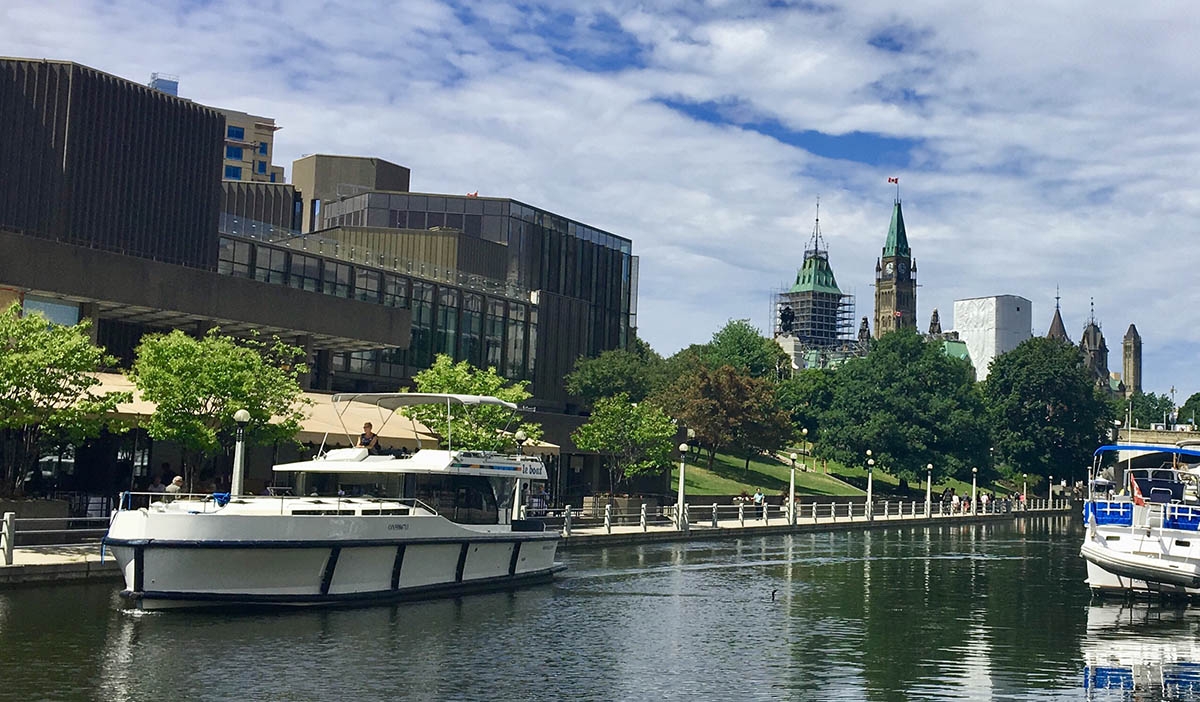
The Rising Cost of Living in Ottawa: Understanding the Crisis
The cost of living crisis in Ottawa has been a growing concern for many residents in recent years. As the capital city of Canada, Ottawa is known for its cultural diversity, vibrant economy, and high quality of life. However, the rising costs of essential goods and services have made it increasingly difficult for many families and individuals to make ends meet.
The cost of living crisis affects various areas of life, from housing and transportation to healthcare and education. The high cost of living in Ottawa has led to financial stress, housing insecurity, and a widening wealth gap between high and low-income residents. It is essential to understand the factors contributing to the crisis and the potential solutions to address it.
In this article, we will explore the rising cost of living in Ottawa, its impact on residents, and the factors contributing to the crisis. We will also examine the potential effects of the crisis on the city's economic growth and discuss potential solutions to address the issue. Understanding the cost of living crisis in Ottawa is crucial for taking action to improve the lives of residents and ensure the long-term sustainability of the city's economy.
The Current Situation
The cost of living in Ottawa has been rising steadily in recent years, putting pressure on many residents. According to a report by the Canadian Centre for Policy Alternatives, Ottawa is the third most expensive city to live in Canada, after Vancouver and Toronto. The report also noted that the cost of living in Ottawa has increased at a faster rate than in other major cities in the country.
One of the areas most affected by the rising cost of living in Ottawa is housing. Housing prices have been increasing rapidly in recent years, making it more difficult for residents to afford a home. The average home price in Ottawa increased by 26% in 2020, with the average price now around $700,000. This increase is mainly due to the low supply of homes and high demand from buyers.
Transportation costs are another factor contributing to the cost of living crisis in Ottawa. The city's public transportation system, OC Transpo, has seen fare increases in recent years. The cost of a monthly pass has increased by 27% since 2015, making it more expensive for residents who rely on public transit to get around.
The cost of healthcare and education in Ottawa has also been increasing. According to the Canadian Institute for Health Information, the cost of healthcare in Ontario, where Ottawa is located, has been increasing at a rate faster than inflation. The cost of education, including tuition and books, has also been rising, making it more challenging for students to afford post-secondary education.
Overall, the rising cost of living in Ottawa is impacting residents' ability to make ends meet, especially those with low and moderate incomes. The cost of essential goods and services continues to rise, while wages have not kept pace with these increases. This creates and increased need for debt relief help and advice from specialists, financial stress and insecurity for many Ottawa residents.
Factors Contributing to the Crisis
The cost of living crisis in Ottawa is a result of several factors that have been compounding over the years. Here are some of the main contributors to the crisis:
A. Housing Prices and Affordability Issues
As mentioned earlier, housing prices have been increasing at a rapid pace in Ottawa, driven by a low supply of homes and high demand from buyers. The lack of affordable housing in the city is a significant concern, particularly for low and moderate-income families. Many people are being priced out of the market and are struggling to find suitable housing options
B. Increased Transportation Costs
The cost of transportation is another factor contributing to the cost of living crisis in Ottawa. As the city continues to grow, transportation infrastructure needs to keep up with demand. However, investments in public transportation have not kept pace with the city's growth. As a result, many residents are forced to rely on their cars, which can be costly due to high gas prices, maintenance costs, and insurance premiums.
C. Healthcare and Education Expenses
The cost of healthcare and education in Ottawa is also a factor contributing to the cost of living crisis. While Canada has a publicly-funded healthcare system, there are still costs associated with medical care, such as prescription medication, dental care, and vision care. These costs can add up and be a significant burden for many families. Additionally, post-secondary education in Canada can be expensive, with tuition and book costs being a significant barrier for many students
D. Changes in the Job Market and Wage Stagnation
The job market in Ottawa has been shifting in recent years, with the growth of the high-tech sector and a decline in traditional manufacturing jobs. While these high-tech jobs pay well, they often require specialized skills and education, leaving many people out of the job market. Additionally, wages for low and moderate-income workers have not kept pace with the rising cost of living in Ottawa, contributing to the financial stress experienced by many residents.
Overall, the factors contributing to the cost of living crisis in Ottawa are complex and interconnected. Addressing these factors will require a multifaceted approach that involves a range of stakeholders, including government, businesses, and community organizations.
Effects of the Crisis
The cost of living crisis in Ottawa has far-reaching effects on individuals and communities, from housing insecurity to financial stress. Here are some of the key effects of the crisis:
Housing Insecurity and Homelessness
As housing prices continue to rise in Ottawa, many residents are being priced out of the market, leading to housing insecurity and, in some cases, homelessness. The lack of affordable housing options in the city has created a crisis for low and moderate-income families, who are often forced to choose between paying rent and other essential expenses like food and healthcare.
Financial Stress on Families and Individuals
The rising cost of living in Ottawa has created financial stress for many families and individuals. The high cost of essential goods and services, coupled with stagnant wages, has made it difficult for people to make ends meet. Many families are living paycheck to paycheck, with little room for unexpected expenses or emergencies.
Disparities between High and Low-Income Residents
The cost of living crisis in Ottawa has widened the gap between high and low-income residents. Those with high incomes can afford to pay for the rising cost of goods and services, while those with low incomes struggle to make ends meet. This disparity has far-reaching effects on the social and economic well-being of the city.
Potential Long-Term Consequences for the City's Economic Growth
The cost of living crisis in Ottawa has the potential to have long-term consequences for the city's economic growth. The lack of affordable housing and rising transportation costs can make it challenging for businesses to attract and retain employees, particularly those with lower incomes. Additionally, the financial stress experienced by many families and individuals can have negative effects on the overall health and well-being of the city's residents.
Overall, the cost of living crisis in Ottawa is having significant effects on the city and its residents. Addressing these effects will require a comprehensive approach that involves a range of stakeholders, including government, businesses, and community organizations.
Potential Solutions
Addressing the cost of living crisis in Ottawa will require a range of solutions that involve government, businesses, and community organizations. Here are some potential solutions:
Short-Term Relief Measures for Affected Residents
Short-term relief measures can help alleviate some of the immediate financial stress experienced by low and moderate-income residents. This could include programs such as emergency housing assistance, financial support for healthcare costs, and food security programs.
Strategies for Increasing Affordable Housing
To address the housing crisis in Ottawa, strategies for increasing affordable housing need to be developed. This could include measures such as zoning changes to allow for more diverse housing options, incentives for developers to build affordable housing, and support for non-profit organizations to create and manage affordable housing.
Investing in Public Transportation and Infrastructure
Investing in public transportation and infrastructure can help reduce transportation costs for residents and make it easier for people to get around the city. This could include expanding public transit services, improving bike lanes and pedestrian walkways, and investing in electric vehicle infrastructure.
Government Policy Changes to Address Wage Stagnation and Inequality
To address wage stagnation and inequality in Ottawa, government policy changes could be made. This could include implementing a minimum wage that keeps pace with the rising cost of living, providing incentives for businesses to pay a living wage, and developing programs to support workers in high-demand industries.
Overall, addressing the cost of living crisis in Ottawa will require a collaborative and multi-faceted approach. It is essential for government, businesses, and community organizations to work together to find solutions that promote affordability, equity, and sustainability. By taking action to address the crisis, Ottawa can ensure a high quality of life for all of its residents and promote economic growth and development for years to come.
Conclusion
The cost of living crisis in Ottawa is a growing concern for many residents, with the rising cost of essential goods and services putting pressure on families and individuals. The crisis is caused by several factors, including housing affordability issues, increased transportation costs, rising healthcare and education expenses, and wage stagnation.
The effects of the cost of living crisis are far-reaching, including housing insecurity and homelessness, financial stress on families and individuals, disparities between high and low-income residents, and potential long-term consequences for the city's economic growth.
However, there are potential solutions to address the cost of living crisis in Ottawa. Short-term relief measures can help alleviate some of the immediate financial stress experienced by residents, while strategies for increasing affordable housing and investing in public transportation and infrastructure can reduce the cost of living in the long term. Government policy changes to address wage stagnation and inequality can also be implemented to promote affordability and equity.
It is essential for government, businesses, and community organizations to work together to find solutions to the cost of living crisis in Ottawa. By taking action to address the crisis, Ottawa can ensure a high quality of life for all of its residents and promote economic growth and development for years to come.
In conclusion, it is crucial to understand the factors contributing to the cost of living crisis in Ottawa and the potential solutions to address it. The cost of living crisis is a complex issue, and solving it will require collaboration, creativity, and a long-term vision for the city's future.








